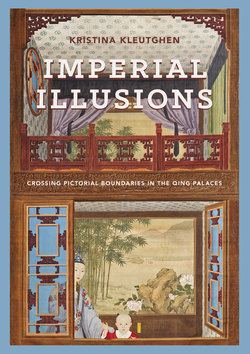Читать книгу Imperial Illusions - Kristina Kleutghen - Страница 83
На сайте Литреса книга снята с продажи.
Оглавление2.4Four rooms created using the distance-point method of perspective. From Nian Xiyao, The Study of Vision. The Bodleian Libraries, University of Oxford, Douce Chin. B. 2, p. 20r.
Consequently, precisely sourcing Nian’s obviously European images from Western perspective texts is not as productive as noting where and how The Study of Vision diverges from its European models. For example, European treatises commonly include a human figure in profile with rays or lines from his or her eye (marking the distance point) that extend obliquely toward the image, which directly faces the reader. In contrast, Nian’s diagrams for constructing the distance point omit this figure, which represents “both the mathematics of perspective and the illusion of space that is one of perspective’s putative goals,” but also results in an indeterminate view of the scene by splitting the viewpoint of the illusion between the text reader/image viewer located outside the picture plane and the profile figure inside the picture plane.55 In his distance-point illustration depicting rooms with tiled floors, rather than relating the vanishing point and the distance point as two representations of the same human viewpoint, Nian simply employs a single en face view of both the technical process and the illusionistic final result of representing
